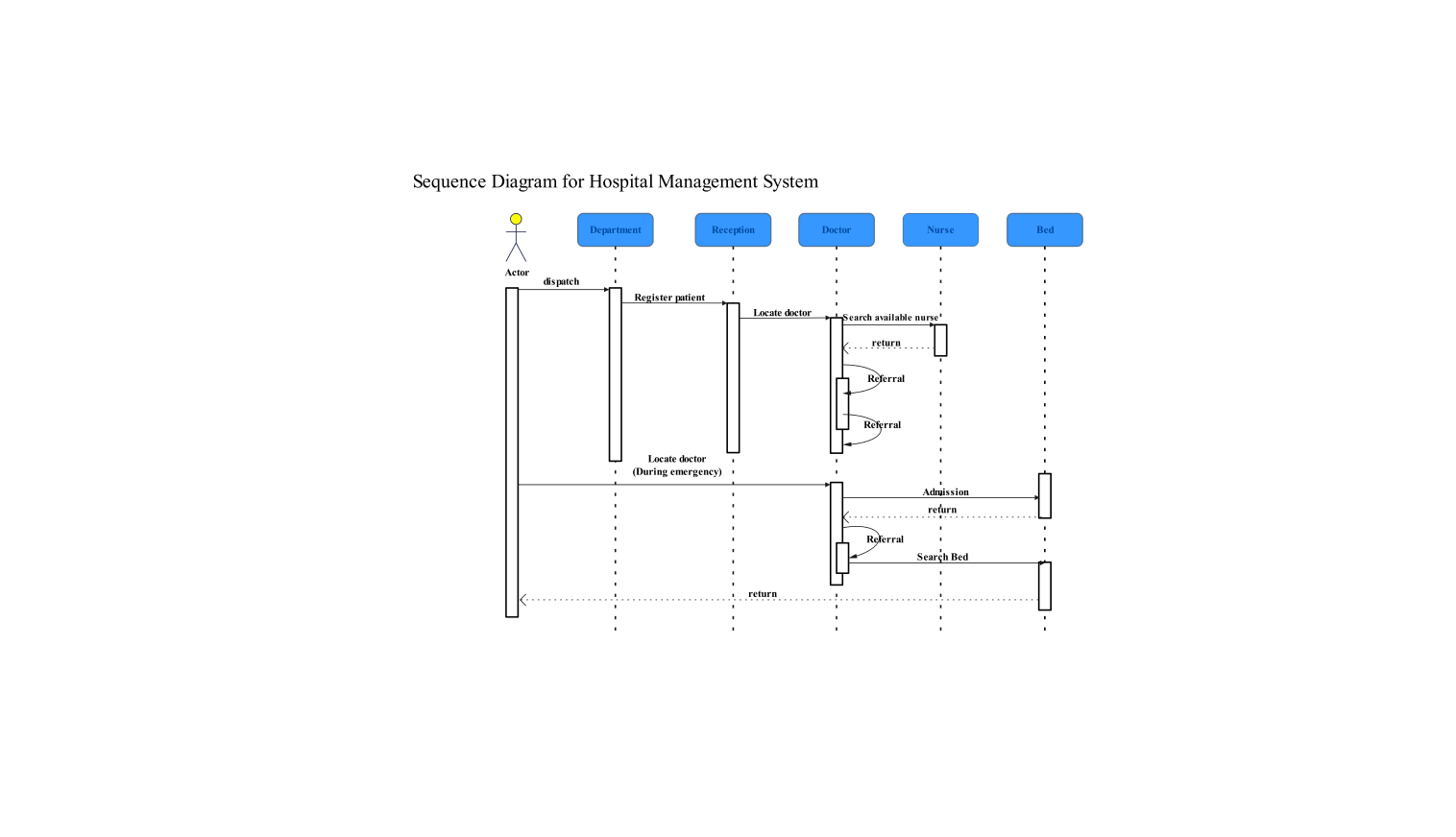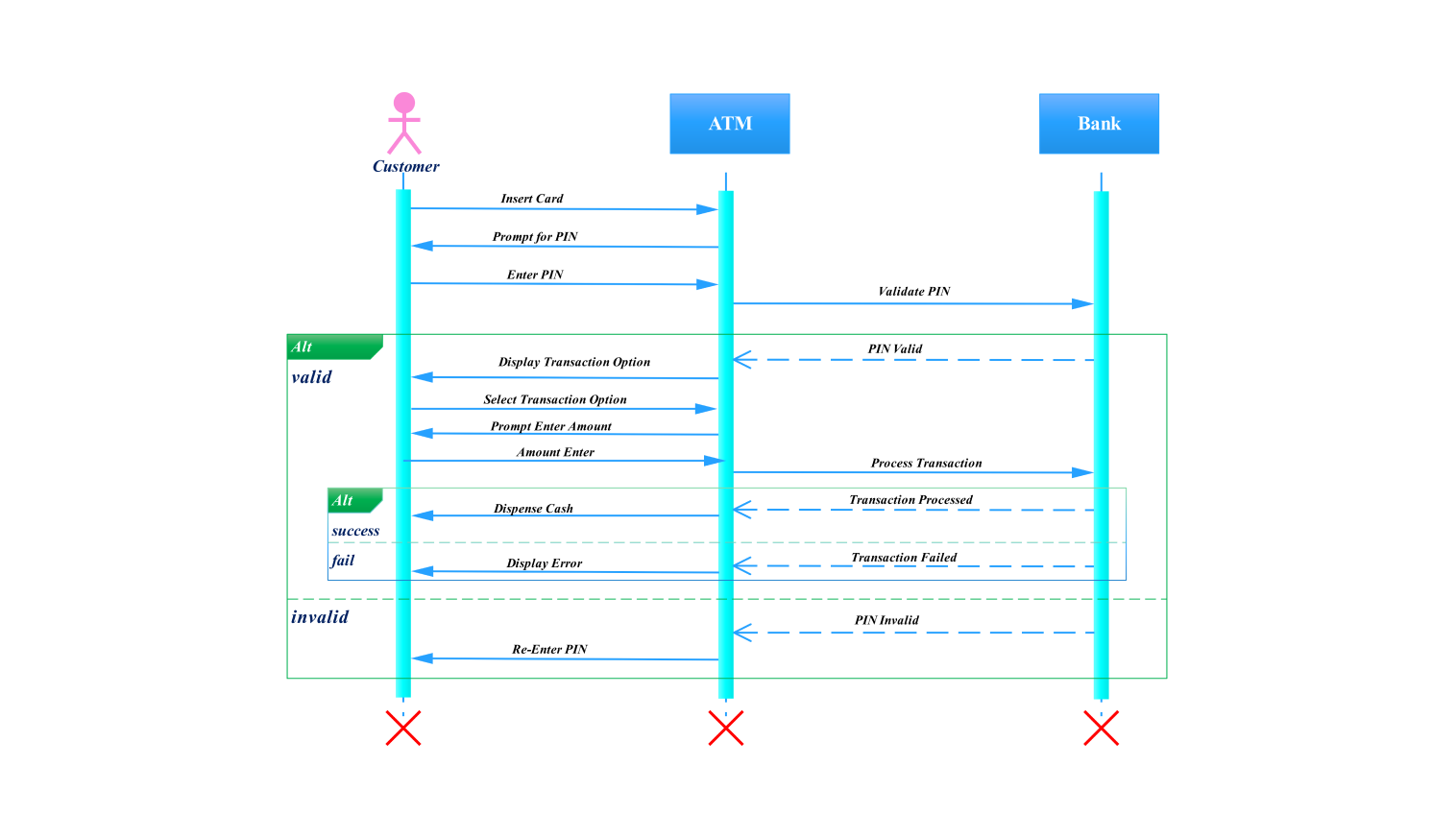- All templates
- Sequence diagram templates
- Sequence diagram payroll management
About this sequence diagram for payroll management
The UML sequence diagram of the payroll management system shows how its main parts: employee, HR, payroll system, and bank, interact. Once the employee submits attendance and work hours, the input begins for payroll processing at the outset. Data is updated with the HR system before payroll calculations. This ensures all employee records are accurate and fresh.
The payroll system is critical to operations. It calculates salaries based on attendance data, deductions, bonuses, and more. The calculation will use this data to produce final salaries. It will then send the info to HR for confirmation. The last step is to approve the final salary slips. This is after the salaries are verified and approved. After that, the slips are provided to employees for transparency and convenience.
In the final phase, the payroll system sends payment data to the bank's system for processing. The bank processes it, debiting employees' accounts with the salaries. The system's unique, component-based approach ensures clarity. It shows the crucial links between systems.
Every element in the UML diagram is important to support the payroll workflow. The employee starts the process. HR manages and verifies the data. The payroll system calculates correctly. The bank system processes the payment. These integrated interactions reduce manual work, errors, and payroll cycle time.
These components and their interactions are visualized in the UML sequence diagram. It provides a comprehensive explanation of a payroll management system. It is useful to any stakeholder seeking to automate payroll management. It will also be a good source for a developer designing or upgrading payroll management software.
Related templates
Get started with EdrawMax today
Create 210 types of diagrams online for free.
Draw a diagram free Draw a diagram free Draw a diagram free Draw a diagram free Draw a diagram free


